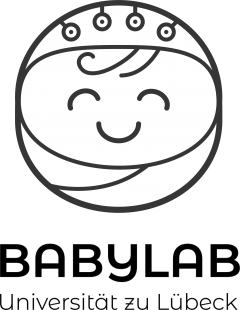Our first study from Lübeck! And it’s a more methods-oriented project. Most EEG studies in infants rely on the analysis of so-called event-related brain potentials (ERPs), meaning that we need to show the babies a large number of very similar pictures (or sounds) in order to be able to then compute mean brain response to these pictures (or sounds). For the babys, this is often just as boring as it sounds. Also, it’s quite different from real life, where we rarely see the same piece of information over and over again. In this project, we therefore borrowed an analysis approach from adult research to try something different. We invited babys to the lab and had them watch one episode of “Peppa Pig”, while we recorded their EEG-signal. Afterwards, we used so-called encoding models to compute the relationship between the ongoing EEG-signal and a number of video parameters, in particular the audio and the (visual) motion content. For both of these parameters, we could obtain very robust and clear-cut responses. In the future, such approaches might be used to design more naturalistic and fun experiments for our participants.
Jessen, S., Fiedler, L., Münte, T.F., & Obleser, J. (in press). Quantifying the individual auditory and visual brain response in 7-month-old infants watching a brief cartoon movie. NeuroImage.
